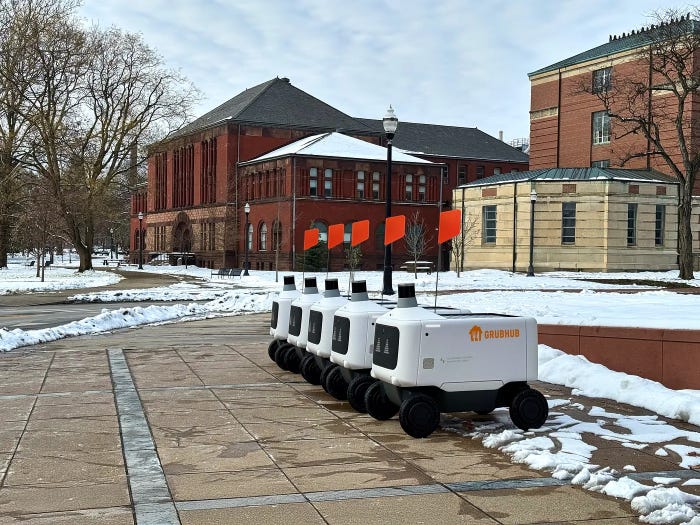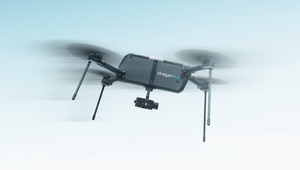Generative AI in 2025: Productivity, Cybersecurity and CreativityGenerative AI in 2025: Productivity, Cybersecurity and Creativity
A comprehensive look at how generative AI could evolve in 2025 as it reaches maturity

Generative AI reached new levels of capability in 2024 and this is set to continue in 2025.
IoT World Today has collected generative AI predictions from companies across industries, examining how they expect generative AI to transform industries in the coming year.
Here are some of the major trends experts anticipate for 2025, including media transformation, cybersecurity, environmental impacts and the importance of robust training data and ethical guardrails.
Andy Lin, CEO of Provoke Solutions:
“By 2025, generative AI is poised to revolutionize mainstream media, with film studios, music producers and massive brands harnessing its power to create hyper-realistic visual effects, original soundtracks and high-quality content at unprecedented speeds. The era of human-AI collaboration will blur the line between artist and algorithm, sparking a new wave of creative output that enhances productivity and imagination.
Generative AI will be a game-changer in education, enabling platforms to offer hyper-personalized learning experiences tailored to each student's unique needs. With adaptive content generation and real-time feedback, students will benefit from curriculums that adjust dynamically, fostering deeper engagement and accelerating learning.
As generative AI becomes more pervasive, robust ethical guidelines and content verification methods are becoming increasingly important. By 2025, we can expect the establishment of global standards and regulatory bodies focused on preventing misuse and ensuring responsible use of AI—tools for identifying deepfakes and ensuring the adoption of content authenticity across digital platforms.
Chatbots and virtual assistants powered by generative AI will evolve into entities capable of sophisticated, empathetic communication. By 2025, these AI models will be able to conduct nuanced conversations that mirror human interaction more closely than ever, transforming customer service, therapy and personal digital companions into highly effective, human-like experiences.
Generative AI will become more accessible, with tools designed for individuals and small businesses becoming as ubiquitous as office software. This democratization will empower users to create professional-grade content and prototypes without extensive technical knowledge, fostering innovation and entrepreneurship on a global scale.”
Charles Crouchman, chief product officer at Redwood Software:
“Small-to-midsize businesses will enter the AI race with ‘citizen developers.’ With the help of generative AI and co-pilots, employees who previously lacked technical expertise will be able to build workflows using plain language. This shift will allow small-to-midsize businesses to compete with—and even surpass—larger companies that may have more resources but less agility in adopting new technologies.”
Burley Kawasaki, global vice president of product marketing and strategy at Creatio:
“Generative AI will evolve beyond automation. While automation tools streamline tasks, generative AI will be leveraged for complex decision-making. Picture this: Instead of merely automating data retrieval, AI models will curate procurement insights tailored to the user, offering suggestions on vendor negotiations or risk mitigation strategies without human initiation.”
Adam Thomson, global sustainable finance and ESG reporting offering leader at IBM:
“Data center energy consumption will become a pivotal issue for AI users. The growth of generative AI is rapidly driving up the energy required to power data centers. According to Goldman Sachs, a ChatGPT query needs nearly 10 times as much electricity to process as a Google search and data center power consumption is on pace to grow 160% by 2030. This growth is setting up a clash with corporate sustainability mandates and CIOs will come under pressure to explain their IT and budgeting in the coming year.”
Matt Aldridge, principal solutions consultant at OpenText Cybersecurity:
“Last year, our prediction came to pass that phishing attacks would become more sophisticated, targeted and difficult to spot, due in large part to the proliferation of generative AI. We predict that this trend will continue, as attackers continue to become better armed with AI-integrated solutions such as next-generation phishing kits. Ensuring that all bases are covered will need to be top of mind for SMB defenders. Getting the basics right has never been more critical.
We are coming towards the tipping point at which alternatives to password authentication can become a true practical reality. I foresee SMBs continuing to enhance their authentication implementations and this may include the adoption of Passkeys, FIDO2 tokens and other password-free solutions to largely sidestep the current phishing and credential-stuffing techniques used by attackers.
In the cybersecurity arms race, defenders are continually trying to keep pace with attackers and their latest techniques. 2025 will see this cat-and-mouse game continue, with AI-enhanced attacks increasingly going up against AI-powered defenses. Defenders will need to focus on understanding the AI capabilities and limitations of their solutions, helping them to avoid complacency while increasing their speed and agility when detecting and responding to attacks.”
Ninan Chacko, CEO at Monotype:
“We will see flawless text in generative AI imagery in 2025. Generative AI may excel at creating images, but text integration has lagged. New tools will emerge that will seamlessly replace flawed text in generated visuals, which will ensure perfect alignment with backgrounds and substrates.”
Nitesh Bansal, CEO at R Systems:
“It’s no secret that generative AI has already had a significant impact on digital product engineering. It has fundamentally changed the way companies optimize the design and functionality of their products – everything from accelerating ideation and prototyping to user experience and product performance.
In 2025, we will see more of this, but we will also see organizations take a more practical approach to how they leverage AI. AI has had a lot of hype – and that will continue – but more and more tech leaders will place a higher emphasis on ensuring measurable ROI – especially what can be achieved in the same fiscal year or under 12 months. For example, if an organization requires complex coding to enhance a new product, using AI to automate routine development tasks can free up needed time and gain an immediate benefit.
Good, clean data is imperative for enterprises to leverage AI to its fullest potential. In all cases, AI is inherently affected by the quality of data used. For example, if a company is leveraging AI in a chatbot feature, it must consider what data is being used to train the generative AI model and ask critical questions. Where did the model obtain its data? What kind of data is included? Has the data been evaluated and vetted to ensure its accuracy? Poor quality, inaccurate, or incomplete data can cause multiple issues in AI training and output, ultimately negating the benefits that the AI was initially meant to create.
Organizations also need to differentiate themselves. It is no longer sufficient to simply add features and functionality to applications - organizations must leverage all their data to create the strategic advantage they need – both internally and externally – through predictive analytics, personalization and end-user customization.”
Kjell Carlsson, head of AI strategy at Domino Data Lab:
“The introduction of ChatGPT two years ago sparked an ‘AI summer’ of massive excitement and investment. According to a recent CNBC report, $26.8 billion was invested in nearly 500 generative AI deals, extending the 2023 trend when generative AI companies raised $25.9 billion.
The ‘bubble’ is unlikely to burst in 2025, but we are entering an “AI fall” as organizations struggle to scale the implementation of AI and where investors, business leaders and boards start expecting returns on their investments. This adjustment will likely lead to a year-over-year pullback in funding for generative AI startups and a further concentration of funding on the select few startups that are getting market traction.
The expectation will not be net job losses from AI in advanced economies and in the U.S. it could actually drive job creation as companies seek to meet the demand for tailored AI solutions that fulfill specific business use cases. However, developing countries with large customer service and back office-processing industries are likely to see significant job loss in part due to AI.”
Christian Buckner, senior vice president of analytics and IoT at Altair:
“By 2025, the initial hype around generative AI, ignited by ChatGPT, will level off as the technology matures. These tools will evolve to meet the specific needs of business users more effectively. Foundation models will continue advancing, delivering increasingly accurate and relevant responses. Meanwhile, the broader market will develop the necessary infrastructure and tools to integrate generative AI into everyday operations. We’ll see the emergence of new guardrails, enhanced techniques for building trust and a broader range of use cases beyond chatbots. More ‘AI Agents’ will be deployed to automate business processes and deliver insights directly to users. Consequently, platforms offering governance over generative AI and the tools to create agents will become increasingly important.
Knowledge graphs provide a semantic layer that describes enterprise data ecosystems in human terms and simultaneously create new logical connections between previously disconnected data sources. As generative AI models think in more human terms, knowledge graphs allow both the models and business users to ‘understand’ the data available and subsequently produce real insights about it.
As organizations seek to democratize their data for competitive advantage, knowledge graphs provide a simpler way for business users to access and leverage that data. Acting like a smart assistant, knowledge graphs organize scattered data into a format that both humans and AI can easily understand and utilize. This streamlines generative AI's ability to deliver valuable insights and empowers people to make more informed decisions similar to how a virtual assistant can help plan your road trip.”
Gary Orenstein, COO at Bitwarden:
“AI-enhanced social engineering scams will continue to dominate the threat landscape. The 2024 Bitwarden Cybersecurity Pulse survey found that 89% of tech leaders are already concerned about existing and emerging social engineering tactics enhanced by generative AI, underscoring the heightened risks. In 2025 people will likely adapt to more believable attacks, but the speed and sophistication of these threats may outpace defense measures. The best way to combat these threats will be layered security—combining passwordless solutions, multi-factor authentication (MFA) and continuous education for employees on identifying potential scams.”
Keri Rich, vice president product management at Lucidworks:
“I expect to see different generative AI-powered experiences woven seamlessly into the entire commerce search and discovery experience next year, including saying goodbye to the search bar. We’ve already seen plans from companies like Amazon to use generative AI to expedite customer research and simplify product comparisons. Retailers first need to understand which parts of their shoppers’ journey could benefit from enhanced personalization and improved efficiency and then develop AI solutions to help them get there.”
Mike Sinoway, CEO at Lucidworks:
“Cost, speed and access control will still be critical use case considerations for organizations hoping to implement generative AI. CIOs and CTOs will expect every software package to have embedded AI tools. Companies will buy integrated AI solution packs that serve specific business functions and processes with data, features, security and outputs included.”
Phil Ryan, senior vice president of strategy and innovation, retail/e-commerce at Lucidworks:
“There will be generative AI applications beyond personal recommendations for consumers. AI-driven tools will generate dynamic content, custom product configurations and hyper-relevant product imagery, i.e., automated AR, based on customer behavior and preferences using real-time data and deep learning models.
The next 12 months will bring more intuitive and convenient ways for customers to interact with e-commerce platforms, including non-text queries. Customers will be able to ask questions without typing words into the search bar. For example, uploading images to find similar products.
AI will increasingly assist merchandisers by providing exception-based management, identifying underperforming or over-performing products, automating product curation and optimizing pricing strategies based on real-time sales and behavioral insights.
In 2025, conversational commerce will finally overtake traditional search and discovery shopping methods and emerge as the primary way consumers engage with brands and complete purchases online.
Enrichment tools will be leveraged using generative AI to add new metadata for products, including PDF source docs, saving time for the search team and merchandisers.”
Eric Sydell, CEO at Vero AI:
“The initial generative AI euphoria is giving way to practical challenges as organizations confront the realities of enterprise-wide deployment. While individual AI tools show promise, scaling them effectively requires more than just technology. Looking ahead to 2025, successful organizations will focus on three key elements: restructuring workflows to enhance rather than replace human workers, leveraging robust evaluation tools to assess AI’s effectiveness and using scientific methods to measure AI systems at scale.
As foundational AI models continue to evolve, there's a limit to how much smarter they can get, given their dependence on vast amounts of data. The next frontier lies in enhancing these models with specialized add-ons that boost their adaptability and domain-specific capabilities. Expect generative AI to become more context-aware, customized and deeply integrated into industry workflows, transforming advanced machine learning from a technological marvel into a practical, indispensable tool that enhances human potential across sectors.
Emerging tech providers are building scalable tools on top of base generative AI models, enhancing their capabilities in more focused and practical ways. Just as cloud computing made powerful computing accessible to all, these ‘cognitive architectures’ will enable businesses of any size to leverage advanced AI without hefty upfront costs. Creative approaches to scaled generative AI level the playing field, empowering small and midsize companies to innovate and strategize effectively, matching the efficiency of larger competitors.
As AI becomes increasingly integrated into work processes, the digital divide is set to widen. Those who learn about and leverage advanced tools, particularly generative models, will gain a significant productivity edge, driving career growth and business productivity. This shift will create a rising demand for AI literacy and upskilling programs. Although AI will automate routine tasks, driving organizational changes and displacing some roles, it will also create new opportunities to manage and oversee AI systems. The need for AI governance and human oversight will intensify, requiring businesses to balance machine efficiency with human expertise.”
Ofir Bloch, vice president of strategic positioning at WalkMe:
“Generative AI 2.0 ‘text to action’ will drive businesses towards hyperproductivity. To date, many businesses’ uses of generative AI have been ‘text to text’ – typing in text prompts and getting a text response back. Next year, businesses will take generative AI to the next level by unlocking ‘text to action’. Users who enter a prompt will automatically trigger an action, freeing up the manual human ‘processing time’, which will, in turn, make daily tasks happen faster.
This incoming shift won’t signal the start of AI ‘taking people’s jobs.’ However, it does mean it’s more important than ever that the workforce can evolve the way it uses AI outputs. Businesses and employees unwilling or unable to adapt in line will start to be left behind. In turn, organizations that can successfully harness text to action will be on the right track to unlocking HyperProductivity – achieving levels of performance not seen before. After all, AI won’t take your job – but someone who can use AI better might.”
Harsha Angeri, vice president of corporate strategy and head of AI business at Subex:
“Generative AI fraud will become more prevalent and higher profile in the news – deepfake audio and video is increasingly getting democratized and there is a lot of open source available so we will see more account takeover fraud using this.
Account takeover and various identity frauds, including synthetic ID use techniques such as SIM swapping and cloning or exploiting devices for illegal gain. This has emerged as a major use case across geographies and will continue to do so. Generative AI will accelerate account takeovers.”
Abhinav Puri, vice president of portfolio solutions and services at SUSE:
“Generative AI governance will have the spotlight in the new year. Over the past two years, many organizations have invested heavily in AI use cases while governments around the world have developed and implemented increasingly stringent regulations on how to leverage AI. As we move from the experimentation to the implementation phase of AI, organizations will be under stricter scrutiny for their risk and security management.
In 2025, I predict more investment and M&A activity focused on AI governance. Vendors will be questioned on how the technology they supply provides risk, trust and security management for organizations.”
About the Author
You May Also Like


.jpg?width=700&auto=webp&quality=80&disable=upscale)
.jpg?width=700&auto=webp&quality=80&disable=upscale)

.jpg?width=300&auto=webp&quality=80&disable=upscale)


